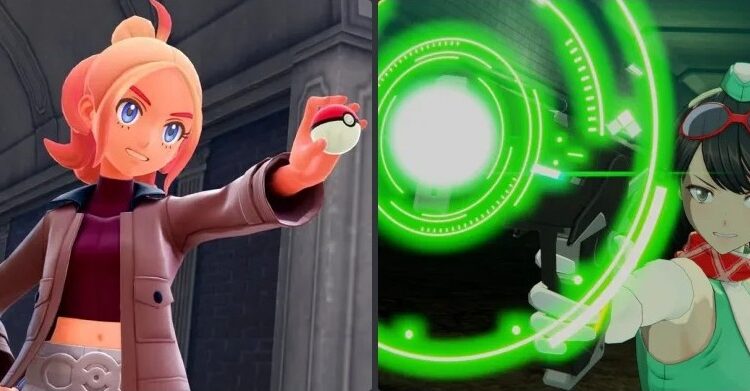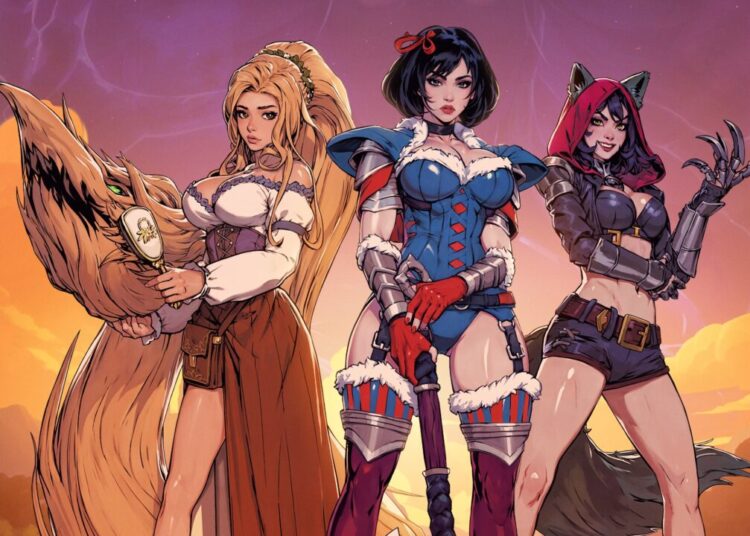Thought I was kidding with that title, huh? Nitroplus is one of the best visual novel devs in the business, being behind absolute legends in the genre like Saya no Uta (written by Gen Urobuchi of Fate/Zero and Madoka Magica fame) and being a co-developer on mainstream juggernauts like Steins;Gate. You’ve likely heard of something that is at least related to them in some way. I’m sure many of you know their mascot, Super Sonico. Nitroplus Blasterz is a big love letter to the developer, so let’s take a look back at this wild fighter.
A Varied Roster Featuring Some of the Best Visual Novels
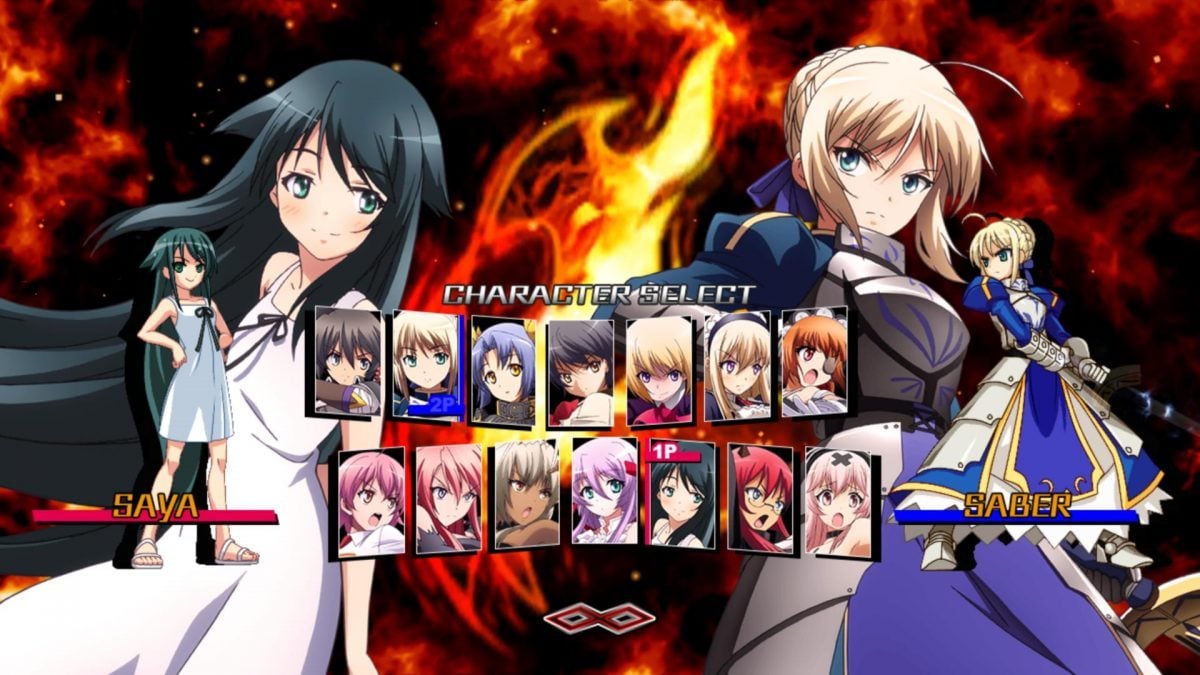
Nitroplus definitely has some great stuff under its belt and in 2015, when they announced the team behind the Arcana Heart series was making a Nitroplus crossover fighter that had SAYA in it, my head exploded. Sadly, we wouldn’t get the game in North America until almost a year and a half later. But when we did, I was so happy. Nitroplus Blasterz: Heroines Infinite Duel is an assist-based anime fighter with a cast of 32 characters, divided into 14 playable fighters and 18 support characters that provide some sort of utility in the fight, much like the assists in the first Marvel vs Capcom game. Of the 14 fighters, the roster is rounded out by the likes of the aforementioned Saber, with Homura from Senran Kagura and Heart from Arcana Heart being available as DLC on the PS4 version but included in the base roster on PC. There are some familiar faces in here for anime fans, as the assist roster contains characters from Psycho-Pass, Expelled from Paradise, School-Live, and Guilty Crown, to name a few.
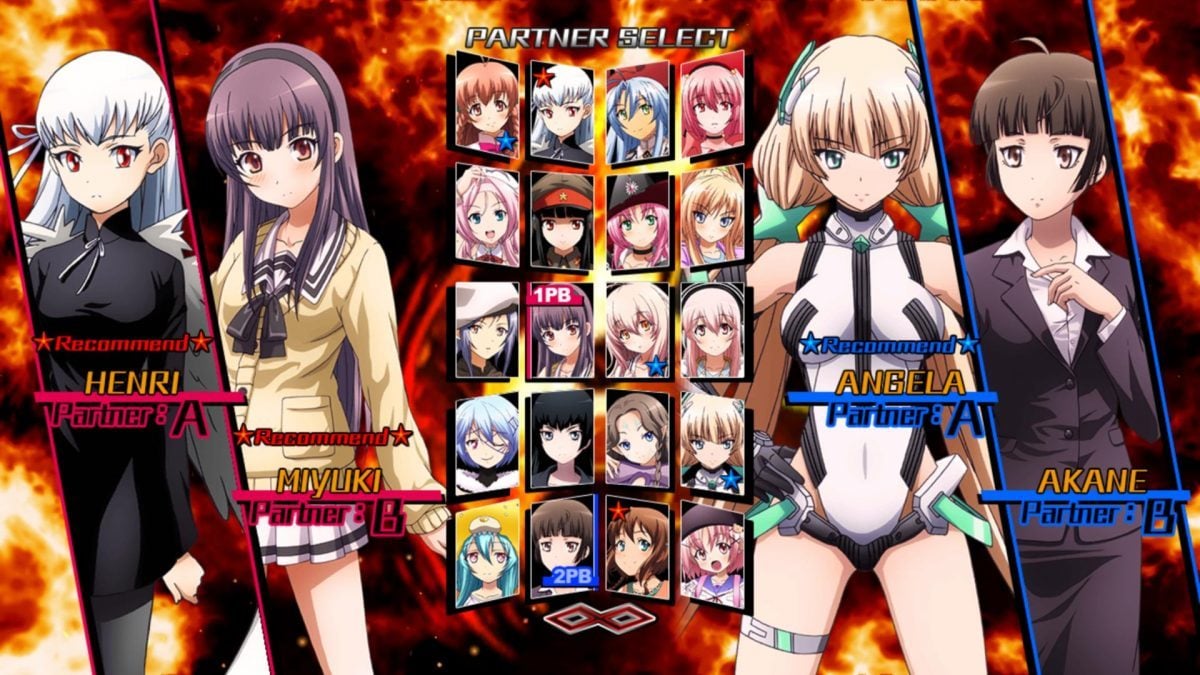
Controls are pretty standard. You’ve got 5 buttons: Light/Medium/Heavy Attack, Evade Action (defensive moves and guards), and Heavy Actions. Special moves are done using your typical fighting game input movements. Assists are crucial to proper play here, but the meta really boils down to one staple pick in Henri due to her insane pressure and area denial and one other that helps your character’s playstyle. The game itself is mechanically solid, with some incredible sprite work to boot. The roster is varied in their playstyles despite the small size and the partner characters open up some crazy combo trees. The stories for each individual character are nothing to write home about, but they do contain some fanservice for those who know the source material, and I will never get tired of seeing Super Sonico and Saya interacting with so many different characters or watching Saber take a bat to the back of the head, courtesy of Yuki from YOU and ME and HER: A Love Story. Most impressive is that they brought back the seiyuu to record new lines. Given how long it had been between the release of some of the VNs represented and this game, it was the first time in several years many of these characters got new speaking parts.
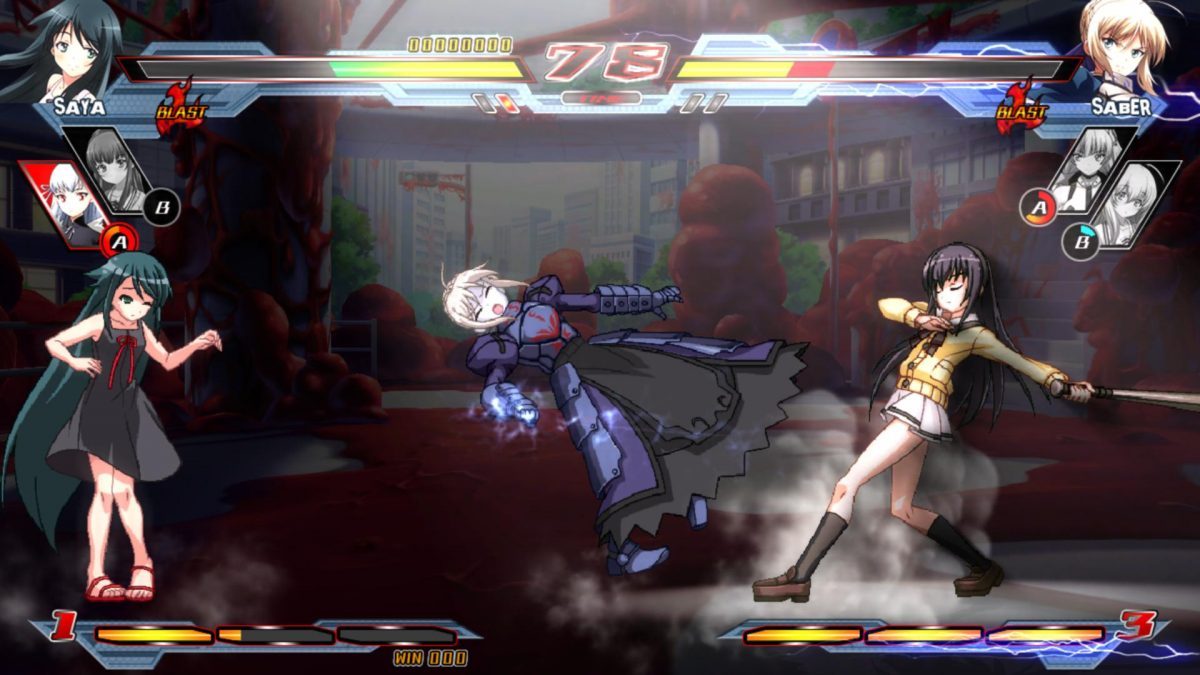
Unfortunately, the pre-fight and victory dialogue is not subtitled, so you could miss a lot. It never really enjoyed mainstream success in the west or in Japan due to the niche nature of the characters involved, and I feel that’s why there were so many characters outside of the scope of Nitroplus that were included. I don’t think it ever would have reached broad appeal, even if it had all the budget in the world, because there’s just no comparing the popularity of the roster in Nitroplus Blasterz to the much more popular series represented in crossover fighters like BlazBlue Cross Tag Battle. That said, there’s still a small but very dedicated community of players in Japan and their matches are always fun to watch.
It’s not all Sunshine and Waifus, but it’s Always Fun
The game is not without its faults, however. There’s not much meat on the bone here, with a big lack of features and modes. The game has serious artificial difficulty with the final boss. My second round against them was a merciless beat down due to their ridiculously overpowered attack and input reading, leading them to score a perfect on me and trapping me in a long string of losses. There’s a standard “story mode”, which is pretty much just your average arcade mode with a few extra dialogue scenes between fights, but there’s also “Another Story” that’s unlocked after clearing the standard mode once, which is longer and tells an original story. There’s no explanation for the game’s mechanics, nor is there a trial mode that teaches you basic combos with each character. You get a bog-standard training mode that lacks basic features, such as meter options, and that’s it. There’s also a definite lack of detail in the backgrounds and a lack of stages in general. The soundtrack is just okay, as the instrumentation leaves a bit to be desired. The budget must have been a little tight with this one, and it’s safe to say that most of it went to character sprites.
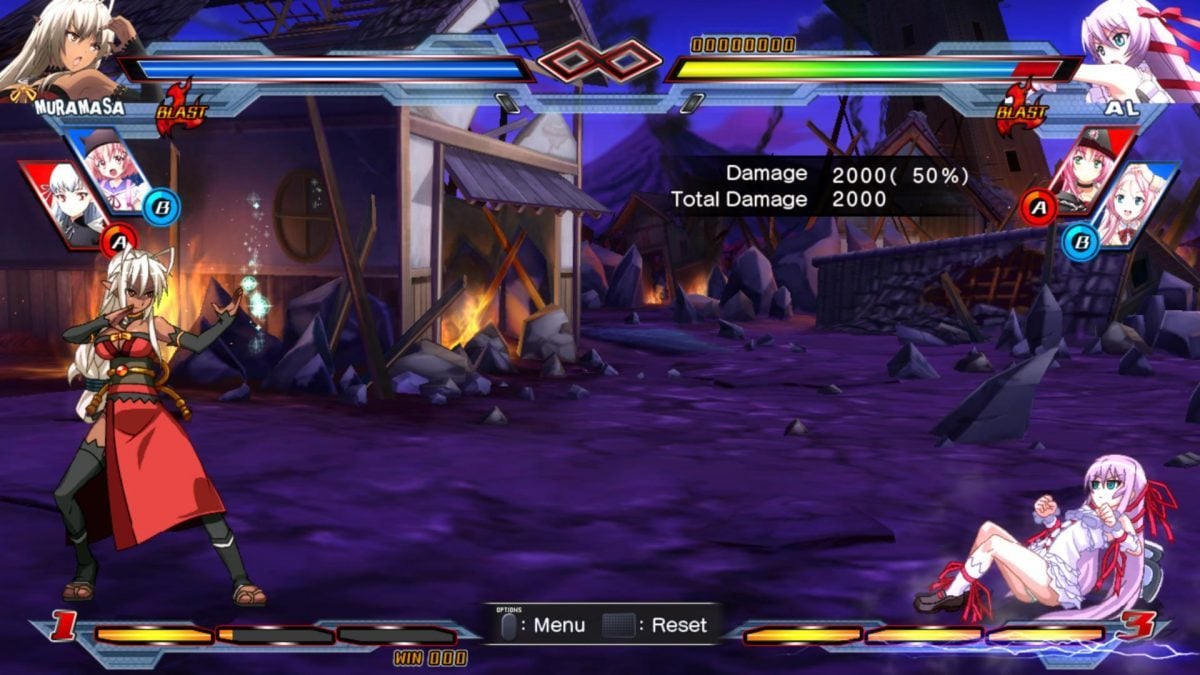
Nitroplus Blasterz hits where it counts though, as it’s still a solid fighting game and a fun little time capsule back to the 2010s, when crossover fighters had a huge resurgence. It was officially released in the west on PC, PS3, and PS4 and isn’t very expensive to buy these days. You can usually catch it on sale for about $5 on both Steam and PSN. If you like Nitroplus or anime fighters, it’s worth checking out for the sheer novelty of it all. Some other genuinely good crossover fighters from this time include Dengeki Bunko Fighting Climax (the sprite work for that game was later repurposed for the mobile game Crossing Void), and Aquapazza: Aquaplus Dream Match. Crossover fighters are something special, and I hope we get more. If Super Smash Bros. can get Sora, Terry Bogard, and Steve, maybe we can finally get another crossover as crazy as this or Tatsunoko vs Capcom.


